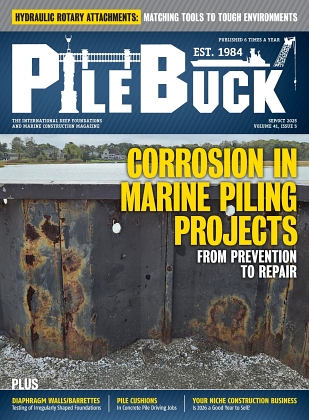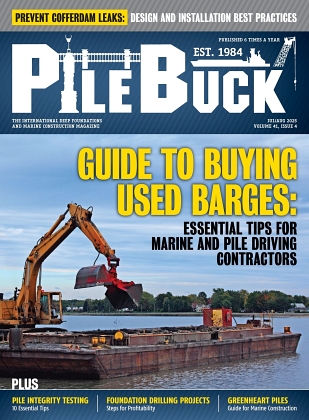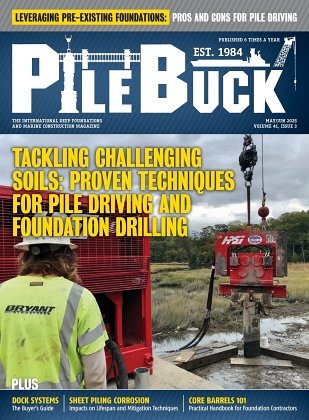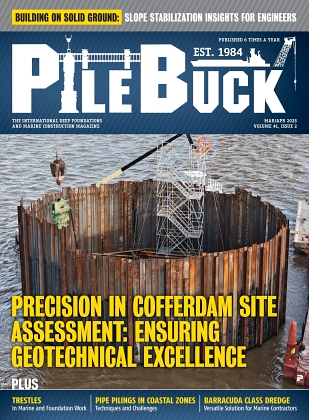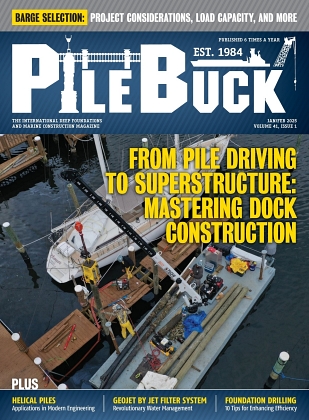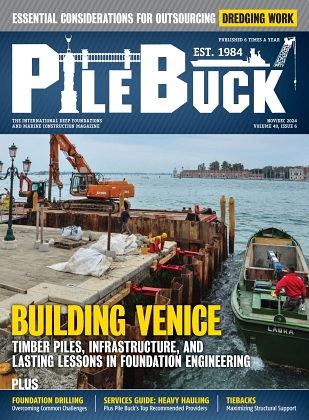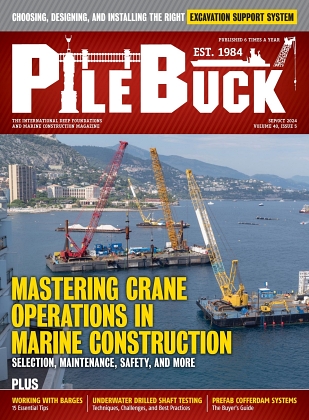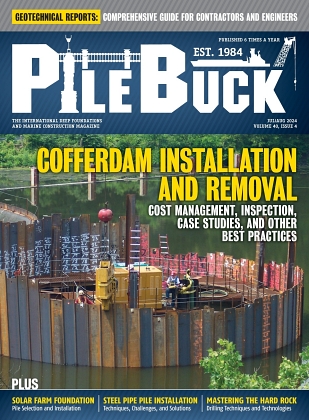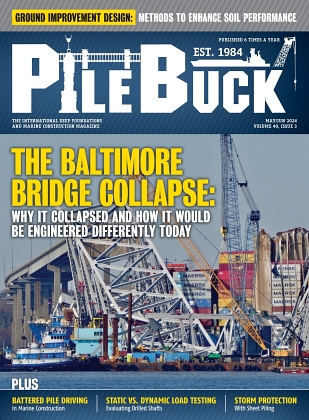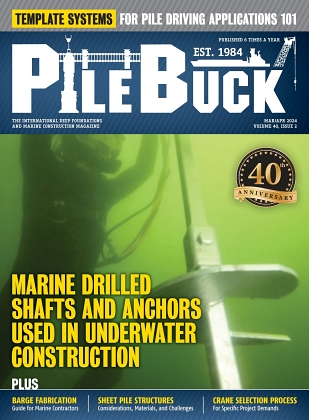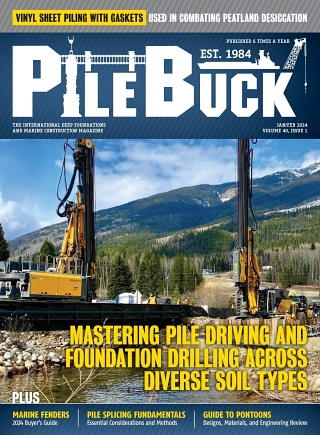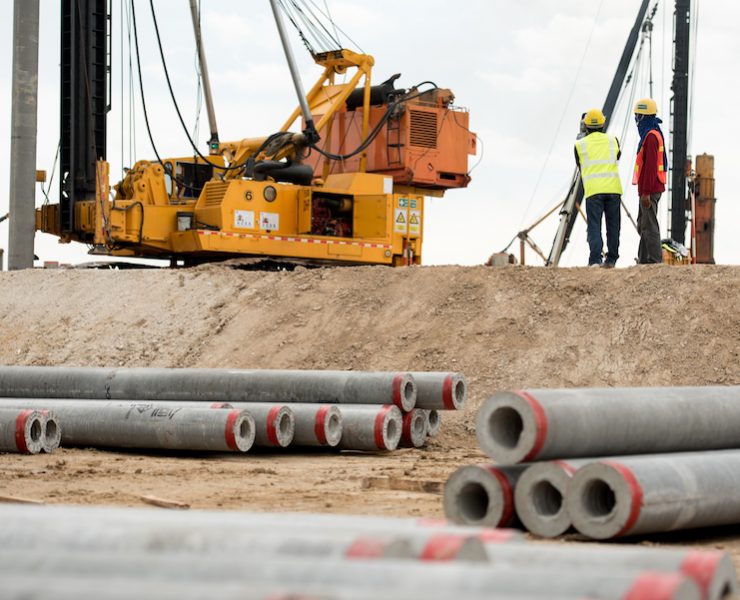Why 2026 is the Year to Exit Your Niche Construction Business

How to Sell a Marine Construction, Pile Driving, Foundation Drilling, or Related Niche Construction Business

With a demand for infrastructure and industry consolidation on the rise—2026 presents compelling opportunities for sellers in marine construction, pile driving, foundation drilling and other related sectors. This guide explores why now is advantageous, outlines the selling process with tailored examples, and covers essential considerations to maximize value and ensure a smooth transition to sell your construction business.
Why Now is the Optimal Time to Sell
The construction industry is experiencing robust M&A activity in 2025, making it a seller’s market for specialized firms like those in marine construction or pile driving. Deal volumes in construction services have surged 33.8% year-over-year, driven by infrastructure investments and labor shortages that encourage larger players to acquire established businesses.
For foundation drilling companies, the market is projected to grow at a 7% CAGR—reaching $7.5 billion by 2032, fueled by demand for deep foundations in urban and renewable energy projects.
In pile driving, equipment markets are expanding at 6.25% CAGR through 2032, with trends toward eco-friendly rigs and modular designs attracting buyers seeking innovation. Global construction M&A values rose 15% in the first half of 2025, with Q2 deals totaling $16 billion—up 93% from the prior year—indicating strong buyer interest in niche players.
Marine construction firms benefit from a sector valued at $66.7 billion in 2024, growing 6.4% amid port expansions and coastal resilience projects. Challenges like material scarcity and supply chain volatility are pushing smaller operators toward sales to larger entities with better resources.
Personal factors also play a role. With skilled-labor shortages persisting, owners nearing retirement can fetch premium valuations while avoiding future operational headaches. If your pile driving business has a strong backlog of bridge or seawall projects, buyers—such as private equity or strategic acquirers—may pay top dollar to integrate your expertise.
Preparing Your Business for Sale
Before listing, thorough preparation is key to attracting buyers and boosting value. Start by auditing financials: Compile three years of tax returns, profit-and-loss statements, and balance sheets—highlighting recurring revenue from long-term contracts/jobs.
Diversify your client base to reduce risk—avoid over-reliance on a single port authority or infrastructure developer. For a foundation drilling firm, emphasize specialized equipment like high-torque rigs—which can add 20-30% to valuation through asset appraisals.
Address operational efficiencies: Implement software for project management to demonstrate scalability, appealing to buyers in the tech-savvy 2026 market. Resolve any legal issues, such as permits for offshore pile driving, and ensure compliance with environmental regulations to avoid due diligence red flags.
Build a strong management team. Buyers prefer businesses that run without the owner, especially in labor-intensive fields like marine construction where succession planning is crucial. Finally, engage professionals: A business broker specializing in construction can provide market insights, while accountants and lawyers handle tax strategies and contracts.
Understanding the Business Valuation
Valuation sets the stage for negotiations. Common methods include asset-based (summing equipment like vibratory hammers for pile driving), income-based (capitalizing earnings from foundation projects), and market-based (comparing to recent sales in marine sectors).
In 2025, construction multiples range from 4-8x EBITDA—higher for niches like sustainable marine builds amid decarbonization trends. A pile driving company with $5 million in revenue might value at $20-40 million if it has proprietary tech or key contracts.
Factors boosting value: Strong backlog (e.g., hurricane-resilient seawalls), low debt, and growth potential in renewables like offshore wind foundations. Conversely, high worker turnover or outdated rigs can detract. Hire a certified appraiser for an objective assessment.
The Step-by-Step Process of Selling
Selling typically spans 6-12 months. Begin with a confidential marketing package. For instance, your marine construction firm may want to highlight its unique selling points—like expertise in deep-water pile installation, without revealing identity.
Identify buyers: Options include strategic acquirers (larger contractors seeking regional expansion), private equity (for roll-ups in foundation drilling), management buyouts, or ESOPs for employee ownership. For a pile driving business, target firms eyeing infrastructure stimulus projects.
Sign NDAs and share teasers to gauge interest, then negotiate a letter of intent (LOI) outlining price and terms. Due diligence follows: Buyers scrutinize finances, contracts (e.g., ongoing dock builds), and operations, so transparency is vital.
Finalize with a purchase agreement, addressing earn-outs (e.g., bonuses tied to post-sale performance in marine jobs) and closing—where funds transfer and you hand over keys. Involve attorneys to navigate warranties and liabilities.
Keep the following in-mind: Negotiate beyond price—include non-competes, transition support (e.g., consulting on marine techniques), and tax structures like asset vs. stock sales to minimize capital gains. The current market is competitive, and multiple offers can drive up bids.
Post-Sale Considerations and Potential Pitfalls
After closing, plan your exit: Provide training to ease handover, perhaps staying on for 6-12 months. Address employee retention with incentives to avoid talent loss in skilled trades.
Watch for pitfalls: Overvaluing based on peak 2025 infrastructure spending or skimping on due diligence, which could reveal hidden liabilities like environmental claims from past marine sites. Emotional attachment might cloud judgment—consult advisors objectively.
Tax implications are significant—structure deals to qualify for qualified small business stock exclusions if applicable. Finally, consider life after sale: Reinvest proceeds or retire, knowing you’ve built a thriving legacy.
Conclusion
To conclude, we’ll leave you with five essential tips:
- Assess market timing carefully: Monitor industry trends like the ongoing surge in infrastructure investments and M&A activity in 2025—consult experts to confirm if current valuations align with your goals before committing to a sale.
- Prioritize professional guidance: Engage brokers, accountants, and lawyers early in the process to navigate complexities, optimize tax strategies, and avoid common pitfalls like undervaluation or legal oversights in niche sectors.
- Focus on value enhancement: Strengthen your business’s appeal by diversifying clients, upgrading equipment (e.g., eco-friendly pile driving rigs), and building a robust management team to command premium prices from strategic buyers.
- Prepare for due diligence transparently: Organize all financials, contracts, and compliance documents upfront—transparency during buyer scrutiny can accelerate the 6-12 month selling timeline and build trust for smoother negotiations.
- Plan your post-sale transition: Beyond the deal, outline employee retention strategies, personal reinvestment options, or retirement plans to ensure a fulfilling legacy—minimizing regrets after handing over your foundation drilling or pile driving operation.
Need help with the sale of your business? We have buyers lined up. Just email [email protected] or call 866-573-0708.
Why is 2026 a good time to sell a niche construction business?
Strong infrastructure demand, high M&A activity, and labor shortages make it a seller’s market.
How can I maximize the value of my construction business before selling?
Diversify clients, upgrade equipment, and build a strong management team to attract premium buyers.

